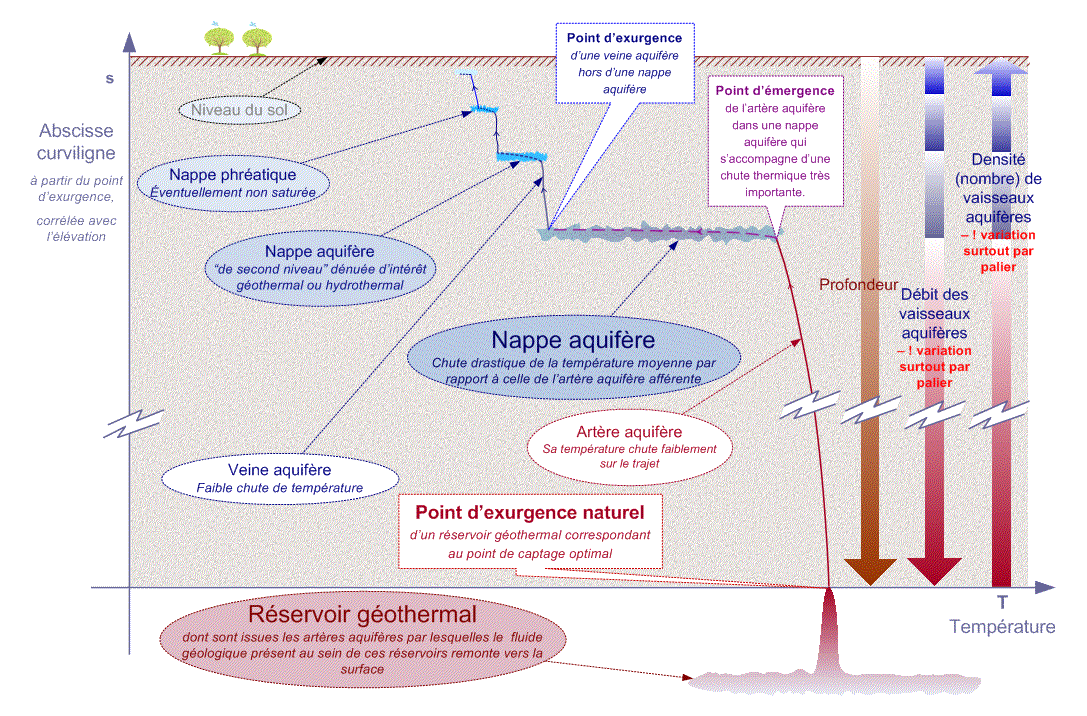Temperature Profile of Natural Underground Water Flows
The temperature of ascending underground water flow decreases by stage: moderately during the increase within the water vessels, significantly with each crossed water reservoir.
An essential characteristic of the geothermal reservoirs is the high enthalpy flow which they produce (i.e. enthalpy of the geological fluid - in [kJ/kg] - multiplied by the flow of flow - in [kg/s]). This enthalpy flow is evacuated by the water arteries resulting from these reservoirs starting from their exurgence point. The heat loss is especially marked on the level of the aquifers crossed by ascending underground water flow and much less in the water vessels (water arteries then water veins).
Change of the temperature along ascending underground water flow
The figure below represents, in a simplified way and with a teaching aim, the change of the temperature of the geological fluid starting from the geothermal reservoir until immediate proximity of surface:
Change of the temperature along ascending underground water flow
The vertical axis represents the curvilinear X-coordinate, S, i.e. the way gone through by ascending underground water flow starting from its origin. This flow of the geological fluid is carried out between, on the one hand, the exurgence point of the geothermal reservoir and, on the other hand, the surface groundwaters and/or the sources formed on the surface.
The aquifers are concentrated near surface (typically with less than 100 meters deep), whereas the exurgence point of the geothermal reservoir is located at a depth about the kilometer. The key of the increase of underground water flow from the geothermal reservoir is thus carried out within water arteries (which come, by definition, of the geothermal reservoirs).
The water circulation, activated by a gradient of pressure raised, goes up naturally towards surface; it does not remain not confined with the great depths. It yields its high enthalpy (temperature and pressure) as it approaches surface. This transfer of heat takes place:
- on the whole, within the underground water reservoirs (aquifers and phreatic),
- incidentally, via the tree structure of water vessels, formed starting from the exurgence point.
The horizontal axis represents the temperature associated with underground water flow represented. Only one water vessel is represented, although their number increases as they approach surface (while their flow decreases in similar proportion).
The temperature falls drastiquement in the first water reservoir met by the water artery.
Conclusion
This report clearly highlights the interest to carry out the water collecting well - if one pursues a geothermal or hydrothermal goal - directly at the exurgence point of the water artery. As Of the first aquifer met, this geothermal energy conveyed by an ascending underground water flow is diffused widely.
ANGIOO recommends an exploitation of heat present within for the purpose of water vessels electrical production in accordance with the principles of the angiogeology.

